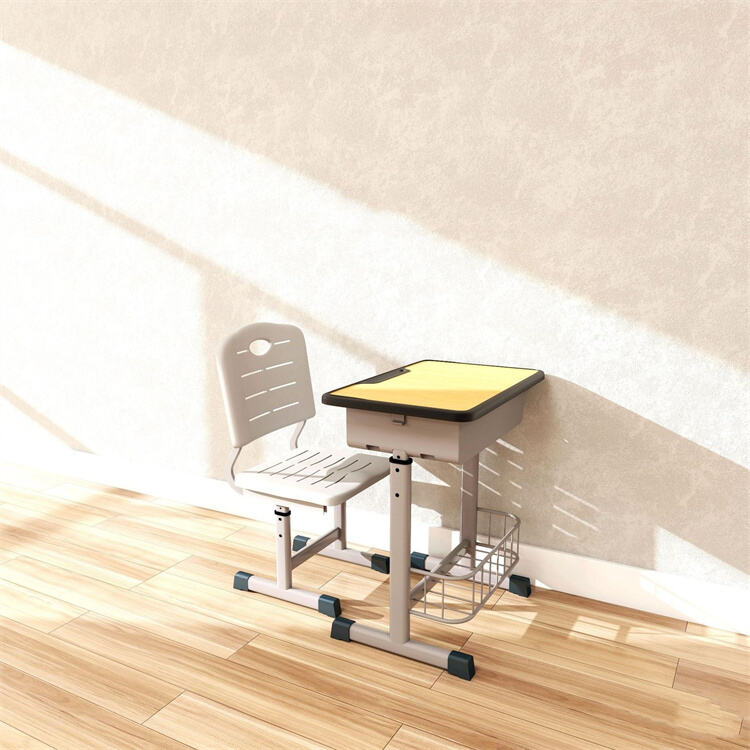The Science Behind Ergonomic Educational Furniture Design
Creating the optimal learning environment begins with thoughtful school furniture design. The furniture students use daily plays a crucial role in their comfort, posture, and ability to focus during lessons. Understanding the intricate relationship between furniture design and student wellbeing has become increasingly important as educators and designers work together to create spaces that support learning at every developmental stage.
Modern school furniture design must balance durability, comfort, and adaptability while meeting strict safety standards. As students spend approximately 6-8 hours per day seated at their desks, the importance of proper ergonomics cannot be overstated. This comprehensive guide explores the essential considerations for designing age-appropriate educational furniture that promotes both comfort and learning.
Ergonomic Principles in Educational Furniture
Anthropometric Measurements and Age-Specific Dimensions
When approaching school furniture design, understanding the anthropometric data for different age groups is fundamental. This includes considerations of height, reach, and body proportions that vary significantly between early childhood and adolescence. Designers must account for the 5th to 95th percentile measurements within each age group to ensure furniture accommodates the majority of students.
For elementary school students, desk heights typically range from 22 to 25 inches, while middle and high school furniture may extend to 28-30 inches. Chair seat heights should allow students to place their feet firmly on the floor with knees at approximately 90 degrees. These measurements must be carefully calibrated to support proper posture and prevent physical strain.
Materials Selection and Durability Requirements
The selection of materials in school furniture design directly impacts both comfort and longevity. Modern materials must be lightweight yet durable, easy to clean, and environmentally sustainable. High-density polyethylene, powder-coated steel, and moisture-resistant laminates have become industry standards due to their combination of durability and maintenance benefits.
Impact-resistant surfaces and reinforced joints are essential in creating furniture that withstands daily use. Additionally, materials should be non-toxic and comply with fire safety regulations while offering some flexibility to accommodate natural movement during extended periods of sitting.
Age-Specific Design Considerations
Early Childhood Furniture Requirements
Designing furniture for early childhood education requires special attention to safety and developmental needs. Rounded edges, stable bases, and tip-resistant designs are crucial for preventing accidents. The school furniture design should incorporate elements that support motor skill development and allow for various learning activities.
Preschool and kindergarten furniture often features adjustable components to accommodate rapid growth periods. Tables and chairs should be lightweight enough for teachers to reconfigure classroom layouts while maintaining structural integrity. Colors and shapes can be used to create engaging learning environments while adhering to ergonomic principles.
Middle School and High School Adaptations
Older students require furniture that supports increasingly complex learning activities and longer periods of focused work. Desk surfaces should be large enough to accommodate textbooks, technology devices, and project materials. Storage solutions become more important as students manage multiple subjects and supplies.
The school furniture design for secondary education often incorporates features like adjustable seat heights, backrest angles, and desk tilts to accommodate different learning styles and activities. Consideration must also be given to the integration of technology, including cable management and charging capabilities.
Movement and Flexibility in Modern Classroom Design
Dynamic Seating Solutions
Contemporary school furniture design increasingly embraces the concept of dynamic seating, which allows for natural movement while maintaining proper support. Chairs with slight flexibility in the seat and back can help students stay focused by accommodating their need for movement without disrupting classroom activities.
Features like wobble stools, rocker bases, and swivel seats are being incorporated into classroom furniture designs to support active learning. These elements help channel students' natural energy while maintaining ergonomic support and promoting healthy posture.
Modular and Reconfigurable Designs
The modern classroom requires furniture that can quickly adapt to different teaching methods and group sizes. Modular school furniture design allows for easy transitions between individual work, small group collaboration, and full class activities. Tables with connecting features and chairs that nest or stack efficiently support these flexible arrangements.
Lightweight yet sturdy construction enables teachers and students to safely rearrange their learning space as needed. This adaptability supports various teaching styles and learning preferences while maximizing the use of classroom space.
Frequently Asked Questions
How often should school furniture be replaced to maintain ergonomic benefits?
School furniture typically needs replacement every 7-10 years, depending on usage patterns and maintenance. Regular assessments should be conducted to ensure furniture maintains its ergonomic properties and structural integrity. Signs of wear that affect posture support or stability should prompt immediate replacement considerations.
What impact does proper school furniture design have on student learning outcomes?
Research indicates that ergonomically designed school furniture can significantly improve student concentration, reduce physical discomfort, and enhance overall engagement in learning activities. Proper support and comfort allow students to focus on their studies rather than physical discomfort, potentially leading to better academic performance.
How can schools ensure they select appropriate furniture sizes for their student population?
Schools should conduct regular measurements of their student population and consult standardized sizing charts for different age groups. Working with experienced educational furniture designers can help ensure proper size selection. Many manufacturers offer sizing guides and can provide samples for testing before large-scale purchases.


